The 5 Tiers of IT Support: Differences and Best Practices
Technical support, or IT support, is the service that assists users of technology products or services. Technical support can be provided through phone, email, chat, or remote access. This support can also be categorized into different levels or tiers, depending on the complexity and scope of the issues that must be resolved.
In this article, we will examine the differences among the 5 IT support tiers, the best practices for configuring tiered Technical support, and the benefits of structuring IT support levels for businesses, support agents, and customers.
What Is Technical Support and Its Levels
Technical support or IT support is the troubleshooting, diagnosing, and resolving problems that users encounter with technology products or services. It can cover various issues, such as hardware malfunctions, software errors, network connectivity, security breaches, data recovery, or user education. It can also be delivered through various channels, such as phone, email, chat, or remote access.
Technical support can be categorized into different levels or tiers, depending on the complexity and scope of the issues that need to be resolved. The typical IT support tiers are:
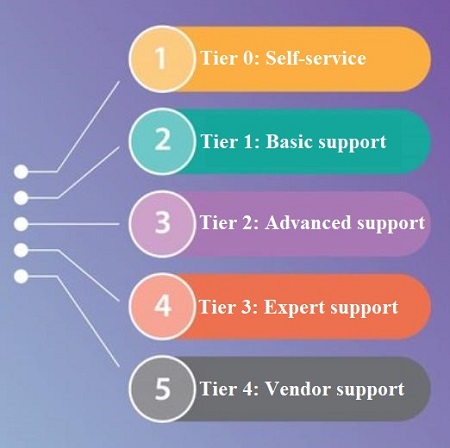
Each tier has a different role and responsibility in the IT support process, and each tier requires various levels of skill and knowledge from the support agents. Read the following to understand the difference between the different tiers of IT support.
Differences among the 5 IT Support Tiers
We'll introduce you to the five tiers of IT support in the most concise and clear explanation possible:
Tier 0 IT Support
Tier 0 IT support is the lowest level of technical support, where users can access self-service resources to solve their problems without contacting a support agent.

It can include online portals, FAQs, knowledge bases, forums, chatbots, or automated tools that can guide users through common issues or tasks.
This support can help users save time and effort, reduce the workload and cost of the support team, and improve customer satisfaction and loyalty.
Tier 1 IT Support
Tier 1 IT support is the first level of contact between users and the support team, where support agents can handle basic and common issues that do not require advanced technical skills or knowledge.

It can include phone, email or chat, where support agents can provide general information, answer simple questions, troubleshoot fundamental problems, reset passwords, or escalate complex issues to higher tiers.
This support can help users get quick and easy solutions, increase the efficiency and productivity of the support team, and enhance customer service and communication.
Tier 2 IT Support
Tier 2 IT support is the second level of contact between users and the support team, where support agents can handle more complex and specific issues that require advanced technical skills or knowledge.
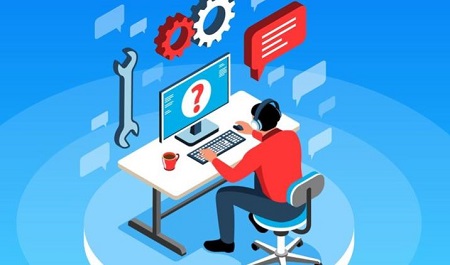
This support can include phone, email, chat, or remote access channels, where support agents can provide in-depth analysis, diagnosis, and resolution of problems, perform software or hardware installations, configurations, or updates, or collaborate with other support agents or teams to solve issues.
It can help users get more accurate and reliable solutions, improve the quality and performance of the support team, and ensure customer satisfaction and retention.
Recommend: Better IT Support with Remote Support Software
One of the tools that can help tier 2 IT support agents provide better service is AirDroid Remote Support. AirDroid Remote Support is a remote access and control software that allows support agents to access and view the users' mobile devices. This software can help support agents to quickly identify and fix software issues, guide users through complex tasks, or demonstrate how to use features or functions.
AirDroid Remote Support can be a valuable tool for tier 2 IT support agents to deliver faster, more effective solutions and build trust and rapport with users. It can also improve the security and privacy of the users, as it requires their consent and verification before establishing a remote connection.
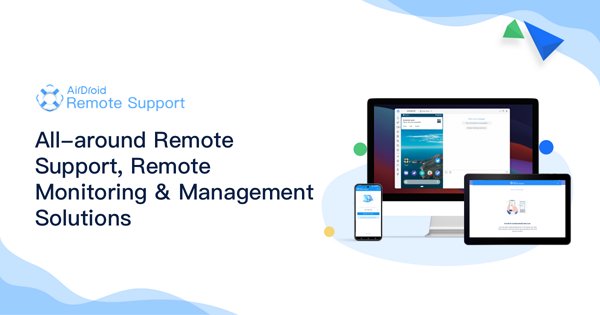
Key Features:
- Unattended Android Access: Under the unattended mode, you can connect and remote control a device without consent from the device end for maintenance purposes.
- Black Screen Mode: Black screen mode is a privacy-centric technology, which enables IT admins to hide the screen image of the remote device during the remote control session and a hint saying "This device is under maintenance" will be shown.
- AR Camera & 3D Marker: Allows you to see through the customers' device camera and guide your customers by placing 3D markers onto real-world objects.
- Tutorial Gesture: Swipe or tap on the shared screen, the tutorial gesture will appear on your customer's device. (Only available for Android devices)
- Live Chat via Voice Call and Voice/Text Message: Tackle and resolve complex issues by communicating directly with real-time voice chat and screen viewing. If the user is not available to take a call, you can communicate through voice messaging or text.
Tier 3 IT Support
Tier 3 IT support is the third level of contact between users and the support team, where support agents can handle the most complex and rare issues that require expert technical skills or knowledge.
Support agents can provide specialized and customized solutions, troubleshoot hardware or software failures, perform system or network maintenance or optimization, or develop new features or functionalities.
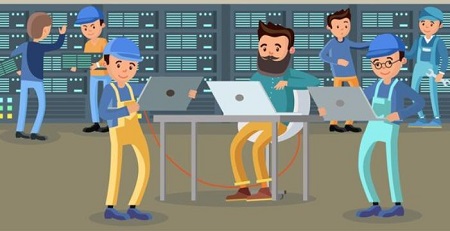
This support can help users get the most optimal and innovative solutions, enhance the reputation and credibility of the support team, and foster customer loyalty and advocacy.
Tier 4 IT Support
Tier 4 IT support is the highest level of technical support, where support agents can contact the vendors or manufacturers of the technology products or services to resolve issues beyond the scope and capability of the internal support team.
Support agents can communicate with the vendors or manufacturers to report bugs, request patches, updates, or replacements, or provide feedback or suggestions.

This support can help users get the most up-to-date and reliable solutions, maintain the quality and functionality of the technology products or services, and improve the relationship and collaboration between the support team and the vendors or manufacturers.
Best Practices: How to Configure Tiered IT Support
Configuring tiered IT support can be challenging and complex, as it involves defining each tier's roles, responsibilities, and processes and ensuring coordination and collaboration among the different tiers. Here are some of the best practices that can help to configure tiered IT support:
Establish Support Frameworks and Systems
Support frameworks and systems are the guidelines and tools that can help to manage and control the IT support process. It can include service level agreements (SLAs), ticketing systems, escalation procedures, communication channels, or performance metrics.
It can help to clarify the expectations and standards of each tier, streamline the workflow and operations of the support team, and monitor and evaluate the outcomes and results of the IT support process.
Set up Time Limits for Different Tiers
Time limits are the maximum time each tier can spend on resolving an issue before escalating it to the next tier. It can ensure the efficiency and effectiveness of each tier, prevent the backlog and delay of the IT support process, and improve the responsiveness and satisfaction of the users.
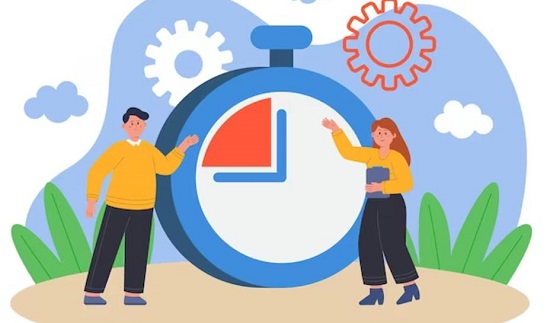
It can vary depending on the issues' complexity and urgency, the support agents' availability and capacity, and the support team's SLAs.
Define the Responsibilities of the Support Agent
Responsibilities are the tasks and duties each support agent must perform in each tier. It can specify the scope and level of the support service each support agent can provide, assign the appropriate support agent to the relevant issue, and ensure the accountability and quality of the support service.
It can include providing information, troubleshooting, diagnosing, resolving, escalating, documenting, or reporting the issues and communicating, collaborating, or training with other support agents or teams.
Optimize Self-Service Resources
Self-service resources are online materials or tools that help users solve their problems without contacting a support agent. It can include online portals, FAQs, knowledge bases, forums, chatbots, or automated tools.
It can help reduce the support team's workload and cost, increase the users' convenience and empowerment, and enhance the customer experience and loyalty. Self-service resources should be optimized to be user-friendly, accessible, relevant, accurate, and updated.
Provide Knowledge Documentation
Knowledge documentation is creating and maintaining records of the issues and solutions the support team encounters and provides. It can capture and share the knowledge and experience of the support team, facilitate the learning and development of the support agents, and improve the consistency and quality of the support service. Knowledge documentation should be organized, structured, searchable, and editable.
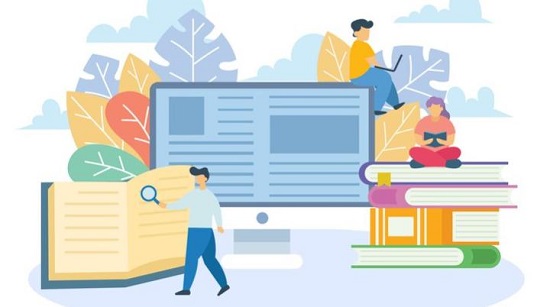
Conduct Regular Staff Training
Staff training provides education and guidance to the support agents to improve their skills and knowledge. It can enhance the competence and confidence of the support agents, prepare them for the challenges and changes of the IT support process, and motivate them to perform better and grow professionally.
Staff training should be conducted regularly, based on the needs and feedback of the support agents, and aligned with the goals and standards of the support team.
Measure and Improve Promptly
Measuring and improving are collecting and analyzing data and feedback to evaluate and enhance the IT support process. It can help to identify the strengths and weaknesses of the IT support process, determine the areas and opportunities for improvement, and implement the necessary changes and actions.
It should be done promptly, based on the performance metrics and customer feedback, and with the involvement and participation of the support team.
Benefits of Structuring IT Support Levels
Structuring IT support levels can benefit the business, the support agents, and the customers. Some of the benefits are:
- For business: Structuring IT support levels can optimize the use of resources, reduce operational costs, increase productivity and profitability, and improve the competitive advantage and reputation of the business.
- For support agents: Structuring IT support levels helps clarify the roles and expectations, provide the necessary tools and training, enhance collaboration and communication, improve the support agents' performance and satisfaction, and foster the support agents' career development and growth.
- For customers: Structuring IT support levels can provide the most suitable and practical solutions, reduce the waiting and resolution time, increase convenience and empowerment, and improve the satisfaction and loyalty of the customers.
Conclusion
Understanding the 5 tiers of IT support is crucial for businesses aiming to streamline technical assistance. Each tier is vital, from self-service options in Tier 0 to vendor involvement in Tier 4.
AirDroid Remote Support emerges as a valuable tool, particularly for Tier 2. This remote access software empowers support agents to resolve issues efficiently, ensuring faster solutions, enhanced security, and user trust.






Leave a Reply.